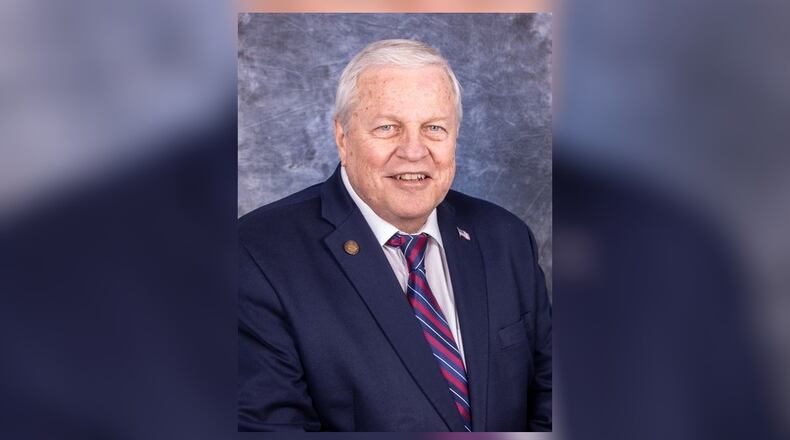“Some people volunteer at their church, some people volunteer at their school. Somehow I fell into a niche that seemed to work for me,” Stone said.
Stone’s last day as Beavercreek mayor is today.
Voters elected to change Beavercreek’s charter in 2016 to directly elect mayors from candidates running for that office. Previously, residents voted for candidates running for council, and the candidate with the most votes would be automatically selected as mayor. The charter changes also instituted term limits of eight years total between city council and mayor, so Stone’s 16-year tenure is unlikely to be replicated.
While most of the work serving the city of Beavercreek is done as a council and in concert with city staff, Stone said, his personal highlight has been the ability to represent the city of Beavercreek to the rest of the state.
“I’m probably the most proud of being able to put Beavercreek on the map. There’s very few major cities around that state that are not aware of Beavercreek. It’s little things like that, that I think have left Beavercreek a better place,” he said.
Stone said he is also proud of his leadership during times of crisis, which have come rapid-fire in the last four years. The night of the Memorial Day tornadoes in 2019, Stone issued a declaration of disaster, and then took off in his personal car following the tornado’s path, to see for himself “why I needed to do that.”
“Well, the city manager and police chief chewed me out,” Stone recalled. “’You should have not been out there, that’s dangerous.’ Again, you don’t do that all yourself, but when you have a crisis, the mayor has roles and responsibilities that nobody else has.”
Issues still face the city, including funding, aging infrastructure, and police staffing. Most recently, Beavercreek police took center stage as the city responded to a mass shooting that took place at the Walmart on Pentagon Boulevard. In November, a gunman wounded four people before killing himself at the scene. Body cam video of Beavercreek police was released the next day.
“We have active shooting shooter training, which is always very interesting to watch. But I could see with watching that video I could see that training: It just fell right into place,” Stone said.
One of the challenges on the horizon facing Beavercreek’s police is infrastructure. The police station off of Dayton-Xenia Road, as well as city hall, are nearing the end of their useful life, city officials previously told the Dayton Daily News. The 11,900-square-foot police headquarters was built in 1965 and renovated in 1997. The department quickly outgrew its space, from 46 sworn officers, eight dispatchers and three support staff to 55 officers, 12 dispatchers and seven support staff today.
Credit: JIM NOELKER
Credit: JIM NOELKER
The city has purchased land on Seajay Drive, near the intersection with Fairfield Road to build a combined police headquarters and city hall. Voters rejected a 2.5-mill police levy in November 2022 to build the new police headquarters, but passed a 1.8-mill levy in May to hire five new officers for the department.
“While I was mayor, we at least bought the land,” Stone said. “It’s about tools. (If) you don’t have the tools and you need them, it takes too long to create the tools. Well, it’s the same way with the police and City Hall. So regardless of whether it’s tomorrow or 15 years down the road, if you don’t have the land, you can’t design it, you can’t build it.”
The biggest hurdle that still faces the city is funding, Stone said. Beavercreek’s charter requires a popular vote to institute a city income tax, an issue that has been struck down by voters three times in the last 10 years. However, the problem of funding — and the debate over the city income tax — “is coming back,” Stone said.
“There’s nobody that doesn’t get approached on council at least several times a year,” Stone said regarding the income tax. “For those that are in favor of it, ‘When are we going to have an income tax?’ and for those who oppose it, ‘You better not ever put that back (on the ballot).’”
Normally when a city is incorporated, the state allows them to institute a 1% income tax. However, Beavercreek’s founding fathers wrote the required vote into the charter when Beavercreek was incorporated in 1980. Beavercreek has since grown to a population of about 47,000 people, and is the third largest city by population in the Dayton area.
“It’s not the best thing to say, ‘Well, I wish they hadn’t done that.’ But if you’ve been around, I know why they did, and I would have probably been in that same boat. But then I-675 happened, Wright State grew, and Beavercreek kept growing and growing, and now we are a full-fledged city that needs certain things,” Stone said.
Looking back on 16 years of service to the city (plus four as a Beavercreek Twp. trustee), Stone says he has no regrets.
“I just enjoy the day. Fortunately my wife does too,” Stone said. “I might have given up on it at least four years ago if she wasn’t enjoying it.”
About the Author



